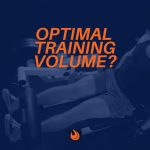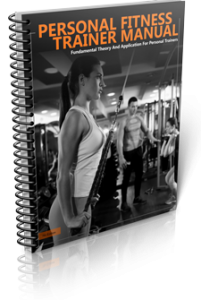The efficiency of sweating as a cooling mechanism depends on several factors, including an adequate supply of water for the body to draw upon.
Complicating this is that an adequate water intake is dependent on a person’s health status, activity level and type of activity.
Water is lost from the body on a daily basis through a combination of breath, urine and bowel movements, as well as perspiration. The body’s natural way of replenishing its water supply is to consume drinks and foods that contain water.
The Institute of Medicine, an independent, non-profit organization whose stated mission is to serve “as adviser to the nation to improve health” recommends that men drink a total of about 3 liters (roughly 13 cups) of beverages a day and that women drink 2.2 liters (roughly 9 cups) of beverages daily.4 Beverages are an obvious source, but water is present also in many foods, perhaps most obviously fruits and vegetables. Food, in fact, accounts for about 20 percent of the average person’s fluid intake each day.
Lack of water can lead to dehydration, a condition that occurs when the body has insufficient water to carry out its normal functions. Even a mild case of dehydration can cause fatigue and hamper athletic performance.
One proactive way to avoid this state is to consume water before thirst occurs. Frequent hydration is therefore a common recommendation.
Assessing Hydration in Athletic Performance
The body’s ability to exert at high intensities – the stimulus for muscle growth and speed development – is dependent on proper hydration status.
When looking on the balance of water loss to intake and absorption, the body is either hyper-hydrated (too much), dehydrated (too little), or euhydrated (normal hydration). Even a loss of 2% of body weight can significantly reduce performance in a warm or hot environment.5 Ranking dehydration has been, and remains, an inexact science. This is due in part to the variations within each individual.
With that said, there are several methods in common use to assess hydration during physical exertion, such as during an athletic competition.
The simplest method is to look at the urine color. This is probably the most inexact however. In a study by Armstrong et al (1998), they found urine color was a better indicator of hydration status than urine volume.3 They noted that a person should drink until the urine was either very pale yellow or pale yellow. Under normal eating conditions, this can be a good indicator; however, many athletes may ingest supplements (particularly B complex) during a competition and that can markedly change the color to a more golden yellow color. In addition, muscle breakdown will result in a darker appearance.
Another method to look at either acute changes in body weight using nothing more than a scale. To determine sweat rate is complex and requires measurement of both fluids taken in and urine output. Sources of error are metabolic loss and respiratory losses. A simpler approach, look at the percentage of body weight lost during a competition. The exact decrement in performance is based on several factors including the athlete’s tolerance or acclimatization, the type of event and the environmental heat. At 3% body weight loss, there is a “dry mouth” feeling and decrease in urinary output. At 4-5% body weight losses, there is a 20-30% decreased work capacity, headaches and difficulty in concentration. As the dehydration climbs into the 6-7% range there is a strong impairment in temperature regulation, increased respiratory rate, tingling and numbness in extremities and finally collapse (fainting) if exercise is continued.
Measuring the urine specific gravity (USG) and osmolality are good indicators when taken in the morning, as this includes the morning body weight after voiding. Because osmolality units are mosm/kg, it is necessary to obtain first an accurate body weight. However, being able to perform this test is contingent upon having access to laboratory equipment. Also, urine osmolality lags behind plasma values, thus making this a better indicator. Plasma and serum osmolality are good indicators, but they require a blood sample from the individual and not many athletes want any amount of blood removed during competition. Thirst is an obvious but, unfortunately, not very reliable sign of hydration. This is because the thirst mechanism in humans is weak and often lags about 20 minutes behind the body’s present condition. This is made even more unreliable by the fact that some people tolerate thirst quite well while others are very susceptible to even minor fluctuations in hydration status.
References
1. Armstrong LE (2000): Performing in Extreme Environments. Champaign: Human Kinetics.
2. Montain, Scott J., Samuel N. Cheuvront, and Henry C. Lukaski. “Sweat mineral-element responses during 7 h of exercise-heat stress.” International journal of sport nutrition and exercise metabolism 17.6 (2007): 574.
3. Armstrong LE, Soto JA, Hacker Jr FT, Casa DJ, Kavouras SA & Maresh CM (1998): Urinary indices during dehydration, exercise, and rehydration. Int. J. Sport Nutr. 8, 345-355.
4. Institute of Medicine (US). Panel on Dietary Reference Intakes for Electrolytes, and Water. Dietary reference intakes for water, potassium, sodium, chloride, and sulfate. National Academies Press, 2005.
5. Sawka, Michael N., et al. “American College of Sports Medicine position stand. Exercise and fluid replacement.” Medicine and science in sports and exercise 39.2 (2007): 377-390.
6. Montain, Scott J. “Hydration recommendations for sport 2008.” Current sports medicine reports 7.4 (2008): 187-192.







